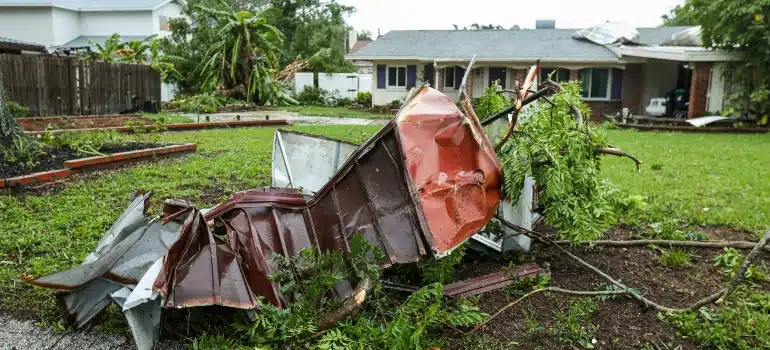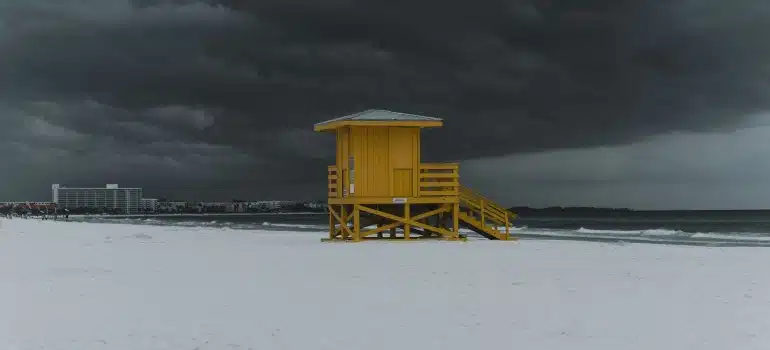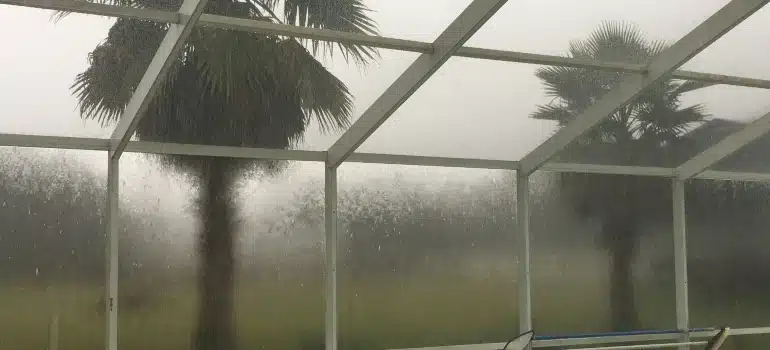Florida weather guide for newcomers
People move to Florida for many reasons—jobs, lifestyle, or the beach. But one thing they all notice quickly is the weather. Florida isn’t just warm. It’s hot, humid, and full of sudden changes. For someone arriving from a cooler climate, this can feel overwhelming. That’s why Pro Movers Miami created this Florida weather guide for newcomers. It will help you prepare for the heat, storms, and everything in between. You’ll learn how to plan your days, dress smartly, and protect your home and belongings. With the right tips, you can settle in with fewer surprises and enjoy what the Sunshine State offers.
Florida’s climate: What new residents should expect
Life in Florida means long summers, short winters, and plenty of sunshine. For newcomers, especially from colder states, the weather may take some getting used to. Expect high humidity, sudden thunderstorms, and warm evenings all year.
Afternoon rain is frequent during the summer, but it often clears up quickly. You’ll also notice how the heat feels stronger due to the moisture in the air. That’s why it’s important to plan and adjust your lifestyle.
Start by reviewing your wardrobe and keeping daily weather checks part of your routine. You’ll quickly learn how to stay comfortable without sacrificing your favorite activities.

Seasonal weather patterns across Florida
Florida has two main seasons: wet and dry. The wet season runs from May through November. This is when most of the rain falls, and humidity peaks. In contrast, the dry season brings cooler air from December through April.
Temperatures rarely drop below 50°F (10°C), even in winter. Each region also feels different. North Florida has cooler winters than the South. Central Florida stays warm but sees more seasonal change than the coast.
South Florida, including cities like Miami and Key West, feels tropical almost year-round. The key to adapting once you move to Miami is knowing your local climate and preparing for seasonal shifts.
Dealing with daily thunderstorms and occasional tornadoes
Thunderstorms are part of life in Florida. Most happen in the afternoon and often pass quickly. They bring heavy rain, thunder, and lightning. While dramatic, they rarely cause damage. Once they clear, the air usually feels cooler and more comfortable.
Tornadoes are less common but still possible. Most occur in spring and summer. They’re usually weak, appearing as waterspouts. Still, it’s smart to follow local alerts. Keep a weather app handy and know where to shelter if needed. Preparing for storms helps you stay calm and avoid last-minute stress when conditions change.
Be ready for hurricane season
Hurricanes are the most serious weather threat in Florida. The season runs from June to November, with peak activity in late August and early September. These storms can bring strong winds, flooding, and long power outages.
Preparation is key. Follow trusted sources like the National Hurricane Center and have a plan in place. This includes knowing evacuation routes, securing your home, and having supplies ready.

Before the storm: How to prepare for a hurricane
Use this Florida weather guide checklist to prepare your household for a hurricane:
- Secure outdoor items like patio furniture, trash bins, and garden tools.
- Fill your gas tank and charge phones, power banks, and other electronics.
- Stock water and non-perishable food for at least 3 days per person.
- Store important documents like IDs and insurance in a waterproof folder.
- Identify your nearest shelter or a safe room in your home.
- Keep flashlights, extra batteries, and a well-stocked first-aid kit ready.
- Have extra cash available in case the card machines or ATMs stop working.
- Choose an emergency contact outside Florida to relay updates.
- Register to volunteer or donate to support your local community.
- Trim trees and shrubs to prevent damage from falling branches.
- Check evacuation routes and plan where to go if you need to leave.
- Include pet food and baby supplies in your emergency kit.
- Keep a basic tool kit and work gloves in case of debris cleanup.
Planning will keep you safer and help you recover faster after the storm!
Protect your home against hurricane damage
Start with your windows. Install storm shutters or use plywood to shield the glass. Check your roof for loose shingles and add hurricane straps if needed. Secure your garage door with braces or upgrade to a wind-rated model.
Trim nearby trees and clear your yard of items that could fly during strong winds. If your home is in a flood-prone area, raise appliances and electronics above floor level. A few smart upgrades can make a big difference in storm safety and insurance claims.
Reputable local movers also offer post-storm services such as hurricane debris removal to help families recover. While you can’t prevent hurricanes, you can reduce their impact by staying informed and preparing early.
Tips to adapt to the Florida lifestyle
Florida’s sun can be intense. Stay hydrated by drinking water throughout the day. Use sunscreen with SPF 30 or higher and wear sunglasses when outside. Avoid outdoor activities during midday when the sun is strongest.
Many locals exercise early in the morning or after sunset. If you have small children or older adults in your home, keep your space cool and well-ventilated. Adjusting your schedule and habits will help your family enjoy Florida’s climate without discomfort.

Dressing right for the Florida heat and rain
Light, breathable clothing works best next to a Florida weather guide. Here are some basics to include:
- Choose cotton, linen, or moisture-wicking fabrics to stay cool and dry.
- Wear loose-fitting clothes that allow airflow and prevent overheating.
- Use sun-protective layers with UPF and long sleeves when outdoors.
- Keep a light sweater or cardigan for cooler evenings or indoor AC.
- Always carry a rain poncho or lightweight water-resistant jacket.
- Opt for breathable sandals, flip-flops, or mesh sneakers.
- Choose light colors to reflect sunlight and reduce heat buildup.
- Add a wide-brimmed hat and quality sunglasses for full sun coverage.
- Pick quick-drying clothes in case of sudden rain or high humidity.
- Avoid heavy or dark fabrics that trap heat and moisture.
- Keep sunscreen on hand and reapply it often during outdoor activities.
- Use a crossbody bag or backpack that won’t trap sweat against your body.
These clothing tips help you stay cool and dry throughout the year, especially on moving day when heat and physical effort can add up quickly.
However, breathable, flexible outfits make a difference during lifting, packing, or walking back and forth. While flip-flops work for quick errands, choose closed-toe, comfortable shoes with good support for the move itself to stay safe and steady.
Plan your day around the Florida forecast
Daily weather impacts your schedule. Check the forecast each morning. For outdoor tasks, avoid the midday sun. Early mornings and late afternoons are best for yard work, errands, or exercise. Thunderstorms usually hit after lunch, so schedule indoor time accordingly.
If you work from home, plan meetings and focused tasks during peak heat hours when it’s better to stay inside. Living in Florida means learning how to read the sky and adjust your plans quickly.
Tips for organizing a move during Florida’s weather
The weather affects every move in Florida, particularly the Miami area. If you’re moving in summer, aim for early morning hours to avoid the heat. Watch for forecasted storms and have a backup plan. Try to avoid peak hurricane months if possible.
If you must move during that time, hire professionals who know how to pack for weather risks. Trustworthy packing services in Miami can help with waterproof materials and temperature-sensitive handling. A team of experts understands how to protect items from both heat and moisture during transport.

Use climate-controlled storage to protect your items
Miami’s heat and humidity can damage sensitive items. To prevent that, choose a climate-controlled storage unit. This is especially important for electronics, wooden furniture, art, and documents. These units help prevent mold, warping, and corrosion.
Many moving companies offer packing supplies and storage units in Miami suited for Florida’s climate. This extra step can protect your belongings long after moving day.
Get the most out of Florida’s weather with the right plan
Adjusting to Florida’s climate takes a little effort, but it pays off! Keep water, sunscreen, and a flexible schedule on hand. Make smart clothing choices, stay informed about storms with a local, Florida weather guide, and prep your home if you move during hurricane season.
Even if you have to move during the peak season, our dependable movers and packers are here to make sure the relocation goes smoothly without you having to deal with the heavy lifting. Therefore, contact us, get your moving quotes Miami residents prefer. With the right steps, your move to Florida can feel like a fresh start, not a heatwave.
